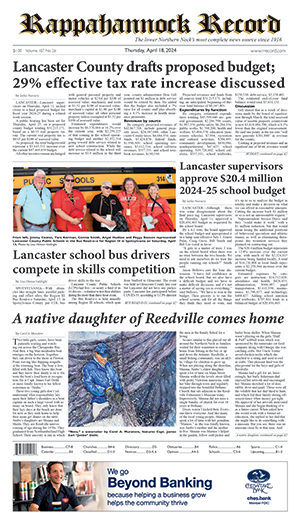by Audrey Thomasson
A swarm of buzzing bees can send people running for cover. Yet, the world of honeybees is an intriguing and important one.
Nature provided the unusual little creatures with a big plan for the survival of man. Those buzzing insects, with their double set of wings, play an integral role to 30% of the foods we eat—some $15 billion dollars annually of U.S. agriculture.
Bees pollinate the flowers of cherry, apple, plum, peach and almond trees as well as strawberries, raspberries, tomatoes, beans, peas, eggplant and many more food crops. Without them, the production of most fruits and vegetables would be drastically reduced.
The annual arrival of beekeepers to my parents’ California orchards each spring was a much anticipated event. Trucks filled with stacks of hives would pull in and the beekeepers would start unloading hives across the orchard, about two hives per acre. Immediately, a buzz of activity ensued as worker bees spread out in search of blossoms to do the vital work of cross pollinating trees—critical to the production of the fruit, almonds and vegetables that make California’s San Joaquin Valley so rich in agriculture.
To be fair, bees get some help from other pollinators like wasps, flies, bumblebees, beetles, butterflies and moths. But, none of those bring the side benefit of the hardworking bees—honey.
According to local beekeeper Carolyn Quinn of Dug-In Farms in Kilmarnock, there is an active local interest in the hobby.
People are taking up the hobby either as a fascination or to help the bee population which has been declining in recent years. The decline is attributed to the varroa mite parasite, pesticides and what has become known as colony collapse disorder—where mature worker bees leave the hive and the queen and remaining nurse and immature bees don’t survive.
The plight of the honeybee is a national issue. “The loss rate in Virginia is 50%,” said Quinn.
But backyard beekeepers are making a difference.
According to Quinn, about 30 potential beekeepers participate in a workshop each year presented by the 120-member Northern Neck Beekeepers organization.
Quinn’s efforts to help her bees survive include planting native plants such as buckwheat in summer and crimson clover in winter. Bees also need water. “It could be a muddy patch, but bees do need water to survive.” And her farm crops and flower gardens are the beneficiaries of her eight hard working hives.
“Honeybees live in a colony with a single queen. A good hive will have 20,000 to 60,000 bees,” said Quinn. While the queen will live up to three years, she leaves the hive only once to mate a single time, then returns and lays 1,500 eggs a day from Spring through mid-September and picks up laying eggs again in late February, Quinn explained.
Drones (males) sole purpose is to mate with a queen from their hive or another.
Worker bees (females) stay inside the hive for three weeks cleaning the hive, feeding the larvae and tending to the queen. “They keep the queen at 80 degrees at all times—even in winter—by bundling in a ball around her. They feed her royal jelly made from nectar…which flows from the end of March to mid-June.”
The worker bees also collect food, guard the colony and build the honeycomb.
Quinn’s bees build the honeycomb in a series of stacked boxes. When the box becomes filled with eggs and honey, the beekeeper adds another layer at the top.
“Dutiful beekeepers will check their hives every 10 days and split the hives once they’re filled,” she said.
To extract the honey, Quinn takes off layers and gently removes the protective beeswax with a hot knife, extracting the honey through a spinning process using a centrifuge. The honeycomb is returned to the hive where it will be cleaned of excess honey by the worker bees and readied for holding pollen, nectar or the queen’s eggs.
According to Quinn, when the queen starts losing her ability to produce her daily quota of eggs, worker bees use the royal jelly to develop 20 new queens. “The first one to hatch, kills off the others” including the old queen, she added.
Honeybees are generally docile. They prefer to leave people alone while they go about their work of collecting nectar and pollen for the good of the colony. And mankind.












